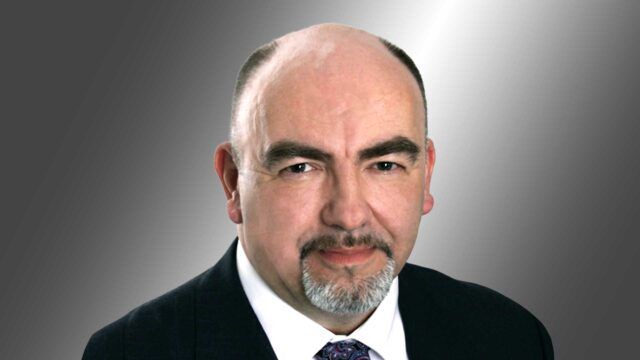There are currently a lot more companies you want to avoid when investing in small-cap stocks in the US, although that does not negate the fact that now is an exciting time to be looking at the sector, according to Antony Creighton (pictured), director and head of strategy for Asia ex-Japan at Lazard Asset Management.
“There have been a couple of very big, long-term trends which have been working against small caps and in favour of large caps over 20 years. Our feeling is that there are still great companies but it’s a lot harder to find them. There’s a lot more chaff than wheat. There’s a lot more noise than signal. You need to be very disciplined and have a differentiated approach to be able to capture those,” he said.
Small caps have been out of favour lately as the stock market rally in the past 18 months or so has been driven by a narrow list of large-cap stocks, namely the Magnificent 7 and some other AI-related stocks such as Broadcom.
In addition to the AI boom lifting the performance of mega-cap technology stocks, the rise in global interest rates has also hurt small-cap stocks given the fact they tend to be more leveraged than their large-cap peers, plus the fact that they typically have a higher percentage of their debt as floating rate.
However, the underperformance of small-cap stocks predates even the last several years as small-cap stocks have underperformed their large-cap equivalents since the global financial crisis, historically an aberration.
Creighton attributes this to numerous factors including that large-cap management teams, particularly in the US, have done such a stellar job of expanding their margins as they have generally gone on to dominate industries globally.
However, Creighton also thinks that now represents an inflection point for small-cap stocks as the shift in interest rates is likely to be favourable towards them, while the valuation of many small-cap stocks is so attractive.
“We think there might be time for a cyclical upshift in small-cap performance generally. Take the Russell 2000, they’ve been growing earnings, but they’ve consistently been seeing devaluation versus large cap. We think it’s got to a point now, with the Russell 2000 on about 15x, and the S&P 500 is on about 26x. And we think there’s scope for small caps to close that gap a bit, maybe not all the way, but they’ve reached a point in our view where it’s as cheap as it’s going to be,” he said.
Separating the wheat from the chaff
Creighton acknowledges that one of the difficulties in covering small-cap stocks is the resources required, although he says that the opportunities are immense because of the inefficiencies.
According to his own estimates, for 86% of the companies in the S&P 500, there are 11 analysts per stock, whereas for small caps, 57% of companies are covered by a maximum of five analysts.
The problem is the sheer number of companies that need to be covered as there are 2,500 small-cap stocks in the US alone so the approach taken by Lazard Asset Management is a systematic one.
The Lazard US Systematic Small Cap Equity strategy uses various “insights” such as margin growth or R&D expenditure, that are fed into an algorithm to determine whether a company is worth investing in.
There appears to be merit in this approach as the strategy has outperformed the Russell 2000 index on a one, three and five-year basis, although Leighton concedes that this approach usually means that even if the strategy outperforms the index, it is rarely the top-performing strategy for a given period.
“We will always be beaten by one active manager that gets it right. Whether that manager stays at the top or not, history tells us that it tends to be quite volatile. Who was number one or two last year tends to be number nine or 10 the next year, whereas we stay around the top quartile on the long run,” he said.
But the strategy does more than hug the benchmark and even though it takes a bottom-up approach to stock selection, it has some material overweights and underweights versus the index, currently being overweight technology and industrials and underweight healthcare and financials, for example.
Creighton is quick to point out that this is not contrived and although the risk management framework will take into consideration sector overweights and underweights, this is not their focus. He also points out that compared with large-cap stocks, there is a lot more diversity within different sectors.
“Out of the top 10 holdings, six of them are industrials. They’re very different businesses though; we’re not being driven by that. We have a risk management step after we’ve figured out which stocks we like, which looks at concentration of risk by sector and also other factors like gearing, exposure to interest rates or oil prices. That’s part of our risk management process, where we will, if necessary, reduce a particular sector,” he said.

















